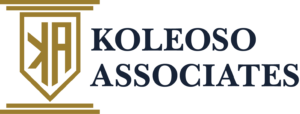Regulation/Red Tape
Bank of Canada, Former Deputy Governor Lawrence Schembri (2022).
Growth-oriented policies help to promote entrepreneurship, rather than putting up barriers. Regulatory economist Russell Sobel discusses how policymakers should think about regulation and its impacts to ensure that rules promote growth and wealth creation through entrepreneurship. Entrepreneurship is the key to the creation of new goods and services that constantly improve our standard of living. From household basics such as washer/dryers to medical procedures such as heart transplants, and technology such as computers, the Internet, and cellphones, virtually every aspect of our lives has been touched by the creativity of entrepreneurs that each day’s search for new opportunities (including at Buyandsell.gc.ca).
The key to fostering entrepreneurship, innovation, and the prosperity that accompanies them is simple. First, work to make sure society views entrepreneurs as the heroes they are. Second, ensure markets are contestable. Avoid or remove (red tape) government barriers that protect incumbent (current) businesses from the entry of new competitors. Third, let the profit and loss system work.
Supporting Indigenous Prosperity: Indigenous Peoples (Métis, First Nation, and Inuit)
In his final speech before retiring from the Bank of Canada, Deputy Governor Lawrence Schembri talks about the Bank’s contribution to advancing economic inclusion and opportunity for Indigenous peoples (Schembri, 2022). The Bank has a role in advancing economic reconciliation with Canada’s Indigenous Peoples. We’re looking at ways to help Indigenous People share in economic prosperity more than they have in the past. We’ve been listening to our Indigenous partners and learning about the Indigenous economy including the History, Potential, and current challenges and opportunities (Schembri, 2022).
“If we are going to advance economic reconciliation with Indigenous People, we need a plan that will focus our efforts and guide our actions” (Schembri, 2022).
As for Indigenous businesses, some of the challenges faced by entrepreneurship (2022) are the lack of equitable grants and funding and existing red tape (and requirements) for Métis and First Nation Indigenous businesses. A Metis and/or First Nation business can be eligible for a grant/funding only if they apply through a First Nation (and/or entity) to get funding. Unfortunately, they can not be eligible otherwise (red tape).
The Indigenous economy
According to the Bank of Canada, Former Deputy Governor Lawrence Schembri who was retiring in 2022 stated that several recent trends speak to the enormous untapped potential of the Indigenous economy (Schembri, 2022).
- The Indigenous population in Canada is young and growing fast (Schembri, 2022).
- The number of employed Indigenous people grew by almost 45% between 2006 and 2016 (Schembri, 2022).
- The percentage of Métis, First Nations, and Inuit with secondary school education or higher have been growing faster than that of non-Indigenous people (Schembri, 2022).
- The number of Indigenous entrepreneurs is rising, and Indigenous businesses are performing well (Schembri, 2022).
The Indigenous economy: 2022 vs 2025
Indigenous economies existed long before there was a Canada. Today, Canada’s Indigenous economy is worth $30 billion and is expected to more than triple in size over the next five years. It is expected to be $100 billion by 2025. But challenges still exist even before considering the economic impact of Covid-19 (Amato, 2020). Hence, we must remove more red tape and provide equitable grants/funding to support a booming economy (Schembri, 2022).
Key barriers
According to the Bank of Canada, Former Deputy Governor Lawrence Schembri who was retiring he stated that there are barriers. Nevertheless, barriers to accessing credit and financing have limited the creation of new business and job opportunities in Indigenous communities. According to Former Deputy Governor Lawrence Schembri, their research found that remoteness and poor infrastructure have restricted Indigenous access to cash, banks, and financial services more broadly (Schembri, 2022).
Bibliography
Amato, D. (2020, June 18). Indigenous Entrepreneurship in Canada: The Impact and the Opportunity. Retrieved from RBC Royal Bank: https://discover.rbcroyalbank.com/indigenous-entrepreneurship-in-canada-the-impact-and-the-opportunity/
Lerner, J., & Sahlman, W. A. (2012, March). Harvard Business Review. Retrieved from Reviving Entrepreneurship: https://hbr.org/2012/03/reviving-entrepreneurship
Munemo, J., & Chambers, D. (2017, October 19). The Impact of Regulations and Institutional Quality on Entrepreneurship. Retrieved from George Mason University: https://www.mercatus.org/publications/regulation/impact-regulations-and-institutional-quality-entrepreneurship
Schembri, L. L. (2022, 5 5). Bank of Canada. Retrieved from Supporting Indigenous prosperity: https://www.bankofcanada.ca/2022/05/supporting-indigenous-prosperity/
Scott, E. L. (2013, 5 15). The Impact of Regulation on Entrepreneurship and Innovation. Retrieved from Washington University in St. Louis:
https://openscholarship.wustl.edu/art_sci_etds/257/#:~:text=Entrepreneurship%20is%20valued%20primarily%20because%20it%
20stimulates%20Schumpeter%27s,second%20chapter%20of%20my%20dissertation%20investigates%20this%20relationship
Stock, D., & O'Brian, T. (2021, 7 12). Sri Lanka Growth Diagnostic Analysis. Retrieved from Center for International Development at Harvard University: https://growthlab.cid.harvard.edu/publications/sri-lanka-growth-diagnostic
Thought Leaders. (2014, August 12). Regulatory Environment Has More Impact on Business Than the Economy, Say U.S. CEOs. Retrieved from Forbes: https://www.forbes.com/sites/forbesinsights/2014/08/12/regulatory-environment-has-more-impact-on-business-than-the-economy-say-u-s-ceos/?sh=e6ce228684da
Utah State University. (2021, 9 2). The Centre for Growth and Opportunity. Retrieved from Regulation and Entrepreneurship: Theory, Impacts, and Implications.: https://www.thecgo.org/book/regulation-and-economic-opportunity-blueprints-for-reform/regulation-and-entrepreneurship-theory-impacts-and-implications/



